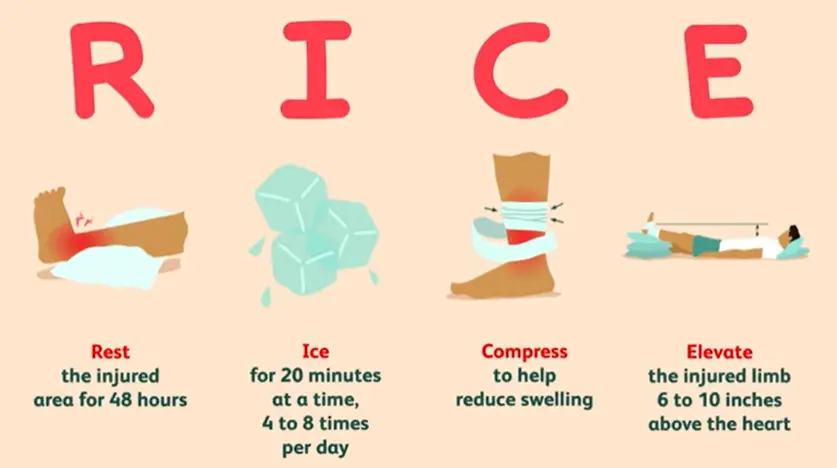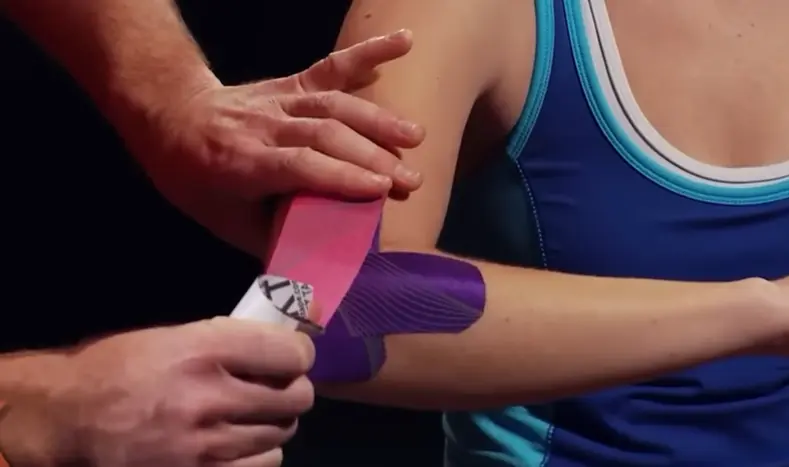Are you an avid pickleball player or thinking about trying out this popular social sport? Pickleball is a low-impact, easy-to-learn game that provides excellent exercise and promotes competitiveness and socialization.
The sport’s small learning curve allows new players to hit a decent shot quickly, and its big pick-up culture brings people together. The Wiffle ball used in pickleball makes the bounce more predictable, and the paddle is more forgiving, making it easier for new players to make good contact with the ball.
However, as with any sport, injuries can occur while playing pickleball. Despite being a safe sport, the broad appeal of the game may be the reason for the high number of injuries.
In this article, we’ll explore the most common injuries associated with pickleball and we will also share some ideas for preventing these injuries and recommendations for quality pickleball gear to help you play safely and avoid aches and pains while enjoying the game you love.
Do Not Forget to Read: Latest Pickleball Paddles
Common Pickleball Injuries
While pickleball is a low-impact sport, injuries can occur. Players can suffer from overuse injuries due to the repetitive nature of the sport, as well as traumatic injuries resulting from sudden movements and falls. Understanding the risks and prevention strategies can help players avoid common pickleball injuries.
Lower Extremity Injuries
Pickleball requires players to make quick start-stop movements and sudden changes in direction, which can predispose them to lower extremity injuries. Knee and lower back injuries are common among players.

The rapid starting/stopping and sudden turning or pivoting movements can cause collateral ligament sprains in the knee. Meniscus and ligamentous injuries can also occur due to acute sprains.

Muscle strains or tears can involve the hamstring muscles, quadriceps, hip flexors and adductors, and calf.
Proper techniques and footwork are essential in preventing lower extremity injuries.Wearing shoes with good support and grip can help prevent ankle sprains.
Maintaining good hydration and performing adequate warm-up and cool-down exercises can also help reduce injury risk.
Upper Extremity Injuries
The shoulder, wrist, and elbow are also vulnerable to injury during pickleball. Injuries that may occur in the upper extremities include tennis and golfer’s elbow, wrist tendinitis, rotator cuff tendinitis and tears, and labral tears.
The serve is underhand in pickleball, which reduces the amount of overhead movement, making it more tolerable for players with pre-existing shoulder issues.
Proper technique and form when serving can help prevent upper extremity injuries.

Incorporating stretching and strengthening exercises can also help prevent injury.
Ocular Injuries
Players may suffer from ocular injuries resulting from direct impact from the paddle or ball. These injuries can be serious and should be evaluated immediately. Wearing protective eyewear can help prevent ocular injuries.
Falls and Traumatic Injuries
Falls resulting in fractures or head trauma are also common in pickleball. Acute traumatic injuries can result from falls, secondary to sudden turning or pivoting movements.

Players should take appropriate measures to protect themselves, such as wearing helmets, knee pads, and elbow pads. Ensuring that the playing surface is in good condition can also help prevent falls.
Equipment
The game’s equipment, including paddles and balls, can affect injury risk. Pickleball can be played on different surfaces, such as concrete, asphalt, or wood.
Using proper equipment that is in good condition can help prevent injury.
Players should also wear appropriate footwear for the playing surface.
Do Not Forget to Read: What Muscles Does Pickleball Work?
Preventing 5 Common Pickleball Injuries
Ankle Sprains and Achilles Injuries
Pickleball involves a lot of lateral movement and quick changes in direction, which can increase the risk of ankle sprains and Achilles injuries.
To prevent these types of injuries, it’s important to invest in tennis or pickleball shoes with optimal court traction and side-to-side support. It’s also essential to warm up properly before playing and stretch all major muscle groups for at least 5-10 minutes.

If you do experience an ankle sprain or Achilles injury, consider using the RICE technique (Rest, Ice, Compression, Elevation) and seeking medical attention if symptoms persist or are serious.
Wrist and Elbow Injuries
Using a paddle with a properly sized handle and focusing on correct form can help decrease the risk of wrist and elbow injuries and tendinitis. Additionally, using wrist, knee, or ankle braces can prevent overuse and traumatic injuries.

It’s important to listen to your body and take frequent breaks to give it time to recover. If you experience persistent pain or discomfort, consider seeking medical attention and exploring potential treatments such as steroid injections, viscosupplementation (gel injections), or physical therapy.
Back Pain
Pickleball requires a lot of bending, twisting, and reaching, which can lead to back pain. To prevent this type of injury, it’s important to stretch the hip flexors, quads, hamstrings, and glutes before and after playing.
It’s also essential to incorporate energy from your legs and hips to generate power and decrease strain on other body parts. Working on balance and agility with exercises like single-leg stands and box jumps can also help prevent back pain.
Sun Damage and Dehydration
Pickleball is often played outside, which means players are exposed to sun damage and dehydration. To protect against sun damage, it’s important to use sunscreen and wear sunglasses.
It’s also essential to stay hydrated by drinking water before, during, and after play. Optimizing your nutrition and hydration can also help prevent overuse injuries.
Musculoskeletal Problems
If you have a functionally limiting musculoskeletal problem, such as severe osteoarthritis, it’s important to be cautious when playing pickleball.
The hard surface and rapid movements of the sport can exacerbate these types of conditions. If you’re unsure whether you should participate, consider discussing it with your physician.
Do Not Forget to Read: Can I Play Pickleball With A Torn Meniscus?
Acute Vs Chronic Injuries
Pickleball players are susceptible to a wide range of injuries, which can be categorized as acute or chronic.
Chronic injuries are often caused by overuse or repetitive pounding on the hard playing surface. Foot injuries such as plantar fasciitis, heel contusions, and blisters can be limited with proper fitting shoes.
Strains of the gastrocnemius, hamstring, quadriceps, or groin can occur suddenly or develop over time. Lumbar muscle strains are common injuries resulting from forward bending and repetitive trunk rotation while striking the ball.
Core stability and lower extremity flexibility training can prevent low back muscle injuries. Upper extremity injuries include flexor and extensor tendon strain at the wrist and epicondylitis injuries at the elbow.

Overhand volleys or repetitive stretching to reach for the ball can cause strains of the rotator cuff. Relative rest, focused stretching, and gentle resistance exercise can help recover from injuries in the upper extremities.
Acute injuries, on the other hand, can result from falls, sudden turning, or pivoting movements. Sprains of the ankle joint, particularly with inversion, are very common and can be treated with RICE treatment, ankle braces, and physical therapy.
Knee injuries can range from acute sprains to meniscal and ligamentous injuries, while wrist injuries include flexor and extensor tendon strain, which can be limited with proper ball striking form.
Physical therapy can help restore proper strength, balance, and motion to allow a player to resume pain-free activity.
Do Not Forget to Read: Is Pickleball Bad For Your Back?
Conclusion
In conclusion, while pickleball is a low-impact sport that is easy to learn and play, players can still suffer from various injuries. The game’s sudden start-stop movements and pivoting can predispose players to lower extremity injuries like knee and lower back injuries.
The upper extremities, particularly the shoulder, wrist, and elbow, are also vulnerable to injury. Falls resulting in fractures or head trauma and ocular injuries resulting from direct impact from the paddle or ball are also common in pickleball.
Using proper equipment, wearing appropriate footwear, performing proper techniques and form, and incorporating stretching and strengthening exercises are important in preventing injuries.
Lastly, players should take measures to protect themselves from sun damage and dehydration by using sunscreen, wearing sunglasses, and staying hydrated.
Do Not Forget to Read: Paddle Tennis vs Pickleball
Do Not Forget to Read: Can You Play Pickleball On A Tennis Court
Do Not Forget to Read: How To Become A Pro Pickleball Player

Michael Stevenson
Hi, my name is Michael Stevenson and I’m a passionate pickleball player. I’ve been playing the game for many years and I’m pretty highly skilled at it. Pickleball is one of my favorite topics so naturally, I love to write about it.
Whether it’s tips for beginners, guides for experts, reviews of new paddles, or advanced playing techniques – if it relates to pickleball then I have something interesting to write about it. So if you’re looking for entertaining and informative information on the topic of pickleball, look no further than my written works!